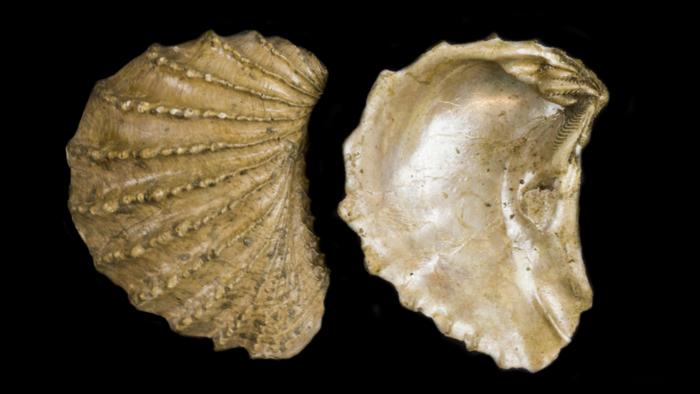Now Reading: Understanding Ocean Rebound After Mass Extinction Events Could Help Us in the Future
-
01
Understanding Ocean Rebound After Mass Extinction Events Could Help Us in the Future
Understanding Ocean Rebound After Mass Extinction Events Could Help Us in the Future

Earth has experienced five documented mass extinctions to date. With the sixth extinction around the corner, scientists are looking to the past to try and understand how life continues on after one of these events.
A new study, published in Science Advances, discusses a surprising discovery about the last mass extinction. Although the fifth mass extinction wiped out three-quarters of all species on Earth, each species-specific ecosystem survived.
“It’s a really interesting and slightly disquieting find. How ecosystems recover from mass extinctions is a huge question for the field at the moment, given that we’re pushing towards one right now,” said David Jablonski, Professor of Geophysical Sciences at the University of Chicago and one of the study’s authors, in a press release.
This new information contradicts popular theories and is actively rewriting everything we thought we knew about ecological survival after mass extinction.
Surviving a Mass Extinction
The focus of this study was on ecological niches, which represent where and how a species fits into the ecosystem. Ecological niches include all of the environmental requirements necessary for a species to eat, sleep, reproduce, and, ultimately, ensure its survival.
For this study, the team looked closely at clams, oysters, cockles, and other mollusks that were alive just before and after the fifth mass extinction during the end-Cretaceous period (66 million years ago). Mollusks are great subjects for this kind of study as their hard shells fossilize easily, giving scientists ample evidence from this period in Earth’s history.
By using mollusk fossils dating to the fifth mass extinction, scientists were able to better understand the global ecological landscape at the time and compared that data to the mollusks that survived.
“What we wanted to do was not just count species, but count ways of life. How do they make their living? For example, some cement themselves to rocks; others tunnel into sand or mud; some are even carnivorous,” said Stewart Edie, paleobiologist at the Smithsonian Institution, in the press release.
Read More: Ancient Frogs Survived Earth’s Greatest Mass Extinction Event by Not Adapting
Oceans Adapting to Mass Extinction Events
What the team found by comparing pre- and post-extinction mollusk fossils shocked them. Even though almost all species died out after the mass extinction event, none of the ecological niches were lost.
“That’s extremely statistically unlikely,” said Katie Collins, paleobiologist at the Natural History Museum of London, in the press release. “If 75 percent of all of the species died out, you would expect at least some of the ways of life to be lost completely – some of those niches only had one or two species in them. But that’s not what we see.”
What the team did see were results that did not line up with any of the popular models for biodiversity survival after extinction. The recent prevailing theory was that whichever species manages to survive in the new ecological landscape created by the extinction event evolves to fit into these new niches. In a survival-of-the-fittest-like scenario, one expects the species with the most survivors to have an advantage and for their ecological niches to prevail while all others die out.
Although this may be what happened with land mammals, the new study says that it did not happen this way in the water. Marine ecosystems and ecological niches thrived, independent of the number of species that survived.
This discovery has important implications for marine conservation efforts, especially in a time when our oceans are subject to increased acidification, pollution, and overfishing.
“This is something we really want to understand if we’re thinking about modern extinction and rebound in oceans, and how to manage it,” said Jablonski in the press release. “Billions of people depend on the ocean for food, and we can see that reserves and management policies need to take into account the larger ecological structure of the biota, rather than just the individual species.”
Read More: The 5 Mass Extinctions That Have Swept Our Planet
Article Sources
Our writers at Discovermagazine.com use peer-reviewed studies and high-quality sources for our articles, and our editors review for scientific accuracy and editorial standards. Review the sources used below for this article:
-
Science Advances. The end-Cretaceous mass extinction restructured functional diversity but failed to configure the modern marine biota
As the marketing coordinator at Discover Magazine, Stephanie Edwards interacts with readers across Discover’s social media channels and writes digital content. Offline, she is a contract lecturer in English & Cultural Studies at Lakehead University, teaching courses on everything from professional communication to Taylor Swift, and received her graduate degrees in the same department from McMaster University. You can find more of her science writing in Lab Manager and her short fiction in anthologies and literary magazine across the horror genre.























